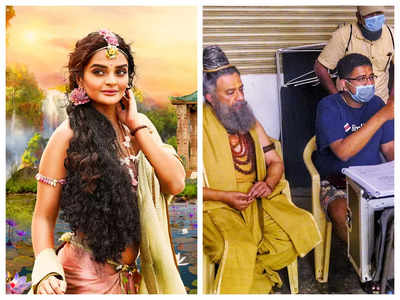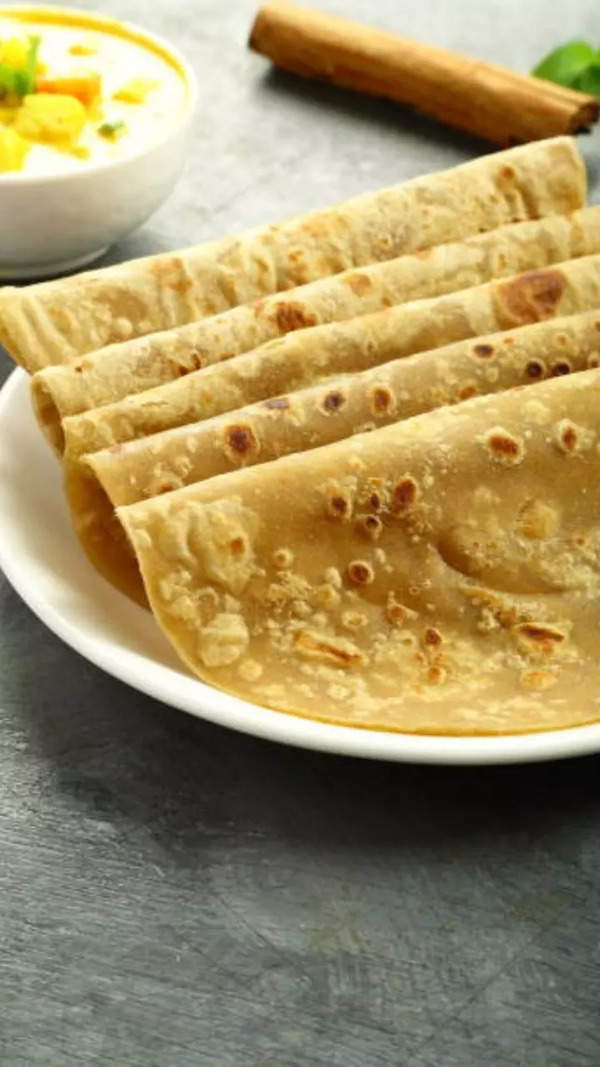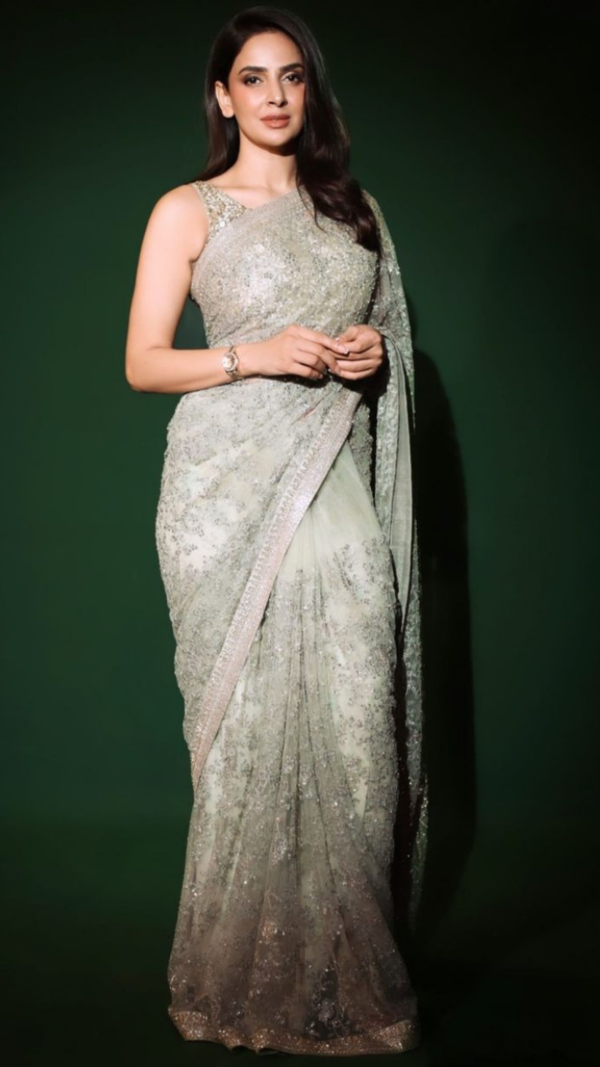- News
- entertainment
- tamil
- movies
- Dushyanth Sridhar helms a Sanskrit film based on Kalidasa’s Sakuntalam
Trending
This story is from October 28, 2021
Dushyanth Sridhar helms a Sanskrit film based on Kalidasa’s Sakuntalam
Renowned Indic speaker and writer Dushyanth Sridhar will now don the role of a director with Sakuntalam. What’s interesting is that Dushyanth will be the first to bring Kalidasa’s magnum opus, Abhijñana Sakuntala, in its original language, Sanskrit.

Renowned Indic speaker and writer Dushyanth Sridhar will now don the role of a director with Sakuntalam. What’s interesting is that Dushyanth will be the first to bring Kalidasa’s magnum opus, Abhijñana Sakuntala, in its original language, Sanskrit. Even though there is no specific industry for Sanskrit cinema, a few films have been made in this ancient language before.And now, Sakuntalam will be the tenth film to be made in Sanskrit.
Talking about stepping into the director’s shoes, Dushyanth says the visual medium reaches a larger population. “The understanding and the vision that I have towards this subject made me take up cinema. Even though I am a debutant, I still took this up because I love to bring my vision on to the visual media,” says Dushyanth.
But why Sakuntalam? He says, “Two reasons — Sanskrit and the subject. Sanskrit is one of the many languages spoken in India. While other languages like Tamil, Malayalam, Kannada, Telugu, and Hindi have several followers, the only ancient language that is least spoken is Sanskrit. I felt I needed to do something for this language. I wouldn’t say that it is neglected, but it is not represented enough in many forms. But being a debutant and doing a film in Sanskrit, I wanted to take up a project that is as big as Sakuntalam. Kalidasa’s epic has been made in other languages, including Tamil, Hindi, Malayalam, but not Sanskrit. It’s like Silappatikaram (Tamil) being made in Greek, Latin, and Mandarin, but not in Tamil. So, this will be the first time the epic is made in its original language. Also, this is one of the best literary works.”
While Dushyanth says that directing the film was no challenge, he had other difficulties. “Though I have been reading the work since childhood, the real task was adapting this mammoth work by Kalidasa for the big screen. All that has been written in the play format cannot be adapted to cinema. So, I had to draft a new screenplay, keeping the present-day audiences in mind,” he says.
The team shot for the film between the first wave and second wave of COVID-19. “From getting measurements to stitching the costumes, everything was coordinated over the phone. All the costumes are khadi, which were then dyed in natural colours,” he informs.
Rajkumar Bharati, the great-grandson of Subramania Bharathi, has composed the music, and Sai Shravanam, the sound recordist of Academy Award-winning film Life Of Pi, is the music producer for the film. The audiography is by AS Lakshminarayan, a two-time National Award-winner, and the editing is by five-time National Award-winner B Lenin.
The highlight of the film, though, is that 95 per cent of the film is in Sanskrit. “And the remaining 5 per cent is in another ancient language, Prakrit. Of course, we will have English subtitles. But we wanted to include other languages like Tamil, Telugu, and Malayalam in the film through songs and poetry. And the dance portions will have Bharatanatyam, Odissi, Mohiniyattam, and Yaksha Gana performances. The ragas used in the music are of Carnatic and Hindustani styles. We have also shown four prominent dynasties of ancient India — Chalukya, Pallava, Hoysala, and Vijayanagar,” says Dushyanth.
With people today watching content in various languages, Dushyanth is certain that there is an audience for Sanskrit films, too. “People here are watching Squid Game, which is in Korean! I am sure they’ll be open to watching Sanskrit films, too,” he
signs off.
Talking about stepping into the director’s shoes, Dushyanth says the visual medium reaches a larger population. “The understanding and the vision that I have towards this subject made me take up cinema. Even though I am a debutant, I still took this up because I love to bring my vision on to the visual media,” says Dushyanth.
But why Sakuntalam? He says, “Two reasons — Sanskrit and the subject. Sanskrit is one of the many languages spoken in India. While other languages like Tamil, Malayalam, Kannada, Telugu, and Hindi have several followers, the only ancient language that is least spoken is Sanskrit. I felt I needed to do something for this language. I wouldn’t say that it is neglected, but it is not represented enough in many forms. But being a debutant and doing a film in Sanskrit, I wanted to take up a project that is as big as Sakuntalam. Kalidasa’s epic has been made in other languages, including Tamil, Hindi, Malayalam, but not Sanskrit. It’s like Silappatikaram (Tamil) being made in Greek, Latin, and Mandarin, but not in Tamil. So, this will be the first time the epic is made in its original language. Also, this is one of the best literary works.”
While Dushyanth says that directing the film was no challenge, he had other difficulties. “Though I have been reading the work since childhood, the real task was adapting this mammoth work by Kalidasa for the big screen. All that has been written in the play format cannot be adapted to cinema. So, I had to draft a new screenplay, keeping the present-day audiences in mind,” he says.
The film stars newcomers Payal Shetty and Shubham Sahrawat along with established actors like Y Gee Mahendra, Mohanraman, TV Varadharajen and Sivakumar. “I found Payal’s profile through a cinematographer friend. She has also trained in Kathak. And I came across Shubham’s profile on social media. And then, I got established artistes for important roles. The real challenge here was to train them in Sanskrit. We had several sessions on Zoom for the dialogues. They had to by-heart and send me voice notes. The workshop took over two months and then, we began the shoot. Except for Shubham, for whom I’ve dubbed, all the others dubbed for themselves in Sanskrit.”
The team shot for the film between the first wave and second wave of COVID-19. “From getting measurements to stitching the costumes, everything was coordinated over the phone. All the costumes are khadi, which were then dyed in natural colours,” he informs.
Rajkumar Bharati, the great-grandson of Subramania Bharathi, has composed the music, and Sai Shravanam, the sound recordist of Academy Award-winning film Life Of Pi, is the music producer for the film. The audiography is by AS Lakshminarayan, a two-time National Award-winner, and the editing is by five-time National Award-winner B Lenin.
The highlight of the film, though, is that 95 per cent of the film is in Sanskrit. “And the remaining 5 per cent is in another ancient language, Prakrit. Of course, we will have English subtitles. But we wanted to include other languages like Tamil, Telugu, and Malayalam in the film through songs and poetry. And the dance portions will have Bharatanatyam, Odissi, Mohiniyattam, and Yaksha Gana performances. The ragas used in the music are of Carnatic and Hindustani styles. We have also shown four prominent dynasties of ancient India — Chalukya, Pallava, Hoysala, and Vijayanagar,” says Dushyanth.
With people today watching content in various languages, Dushyanth is certain that there is an audience for Sanskrit films, too. “People here are watching Squid Game, which is in Korean! I am sure they’ll be open to watching Sanskrit films, too,” he
signs off.
End of Article
FOLLOW US ON SOCIAL MEDIA









